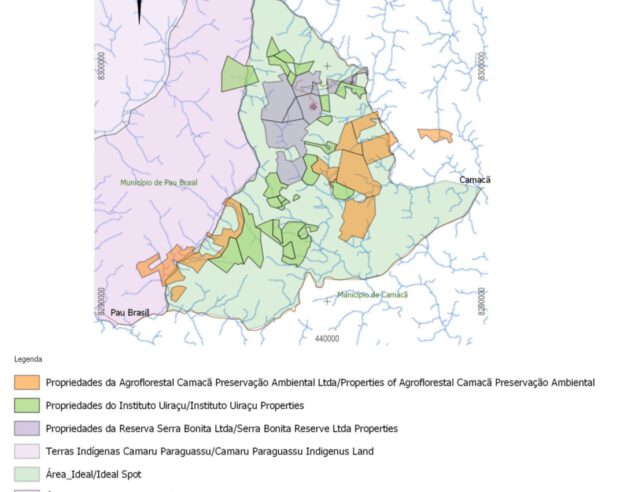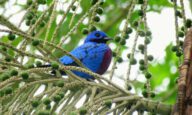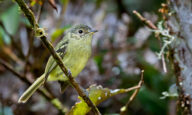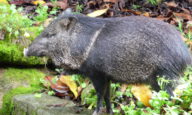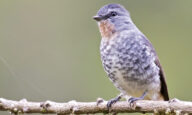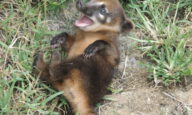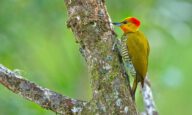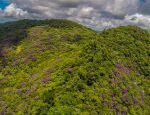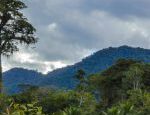The Habitat
The Serra Bonita mountain range belongs to the Brazilian Atlantic Forest, Brazil´s most endangered biome and the world´s second hotspot. Nowadays, less than 10% of the Brazilian Atlantic Forest remains, mostly in small fragments — although 90% of the Serra Bonita mountain range remains covered with forest. The Serra Bonita Reserve Complex (SBRC) is still a shelter to predators that require large territories, like the Puma (Puma concolor) and the Harpy Eagle (Harpies harpyja), so it is vital to expand the protected area for those species´ survival.
Ecoregion: Bahia coastal forest (NT0103)
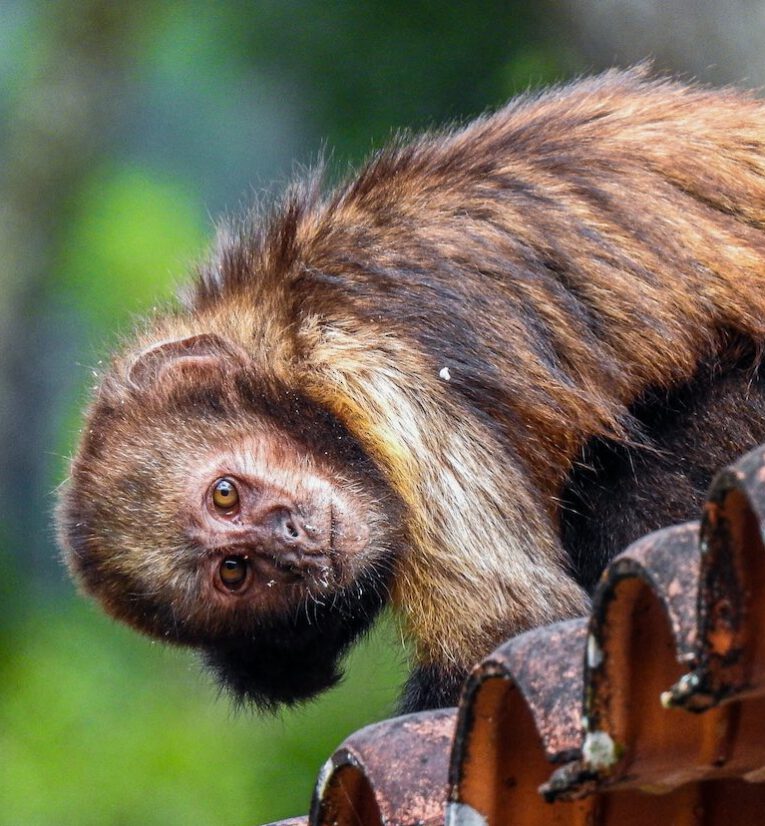
Some of the threatened species now protected in this habitat:
- Critically Endangered Buff-headed Capuchin (Sapajus xanthosternos)
- Critically Endangered Banded Cotinga (Cotinga maculata)
- Critically Endangered Natterer’s Longwing (Heliconius natterer)
- Endangered Bahia Tyrannulet (Phylloscartes beckeri)
- Endangered Buff-throated Purpletuft (Iodopleura pipra)
- Vulnerable White-lipped Peccary (Tayassu pecari)
- Near Threatened Margay (Leopardus wiedii)
Local Partner NGO
Status of registration of the group at the national level
Nonprofit nongovernmental organization (NGO)
Governance and management structure of the group

Conservation Plans
The IU has created a consortium of partners to support the Serra Bonita Reserve Complex (SBRC). This consortium is formed by three legal entities, which play different roles and individually own portions of the Serra Bonita Reserve (SBR). Together they have worked towards fundraising for land acquisition, surveillance and monitoring of the SBR, the conversion of purchased areas into legally designated Private Natural Heritage Reserves (RPPN), institutional management and the accomplishment of the IU’s three programs (as above). The partners in this consortium are:
- Instituto Uiraçu (IU): a non-profit organization with the purpose of acquiring, managing and protecting land, promoting local environmental education, and supporting scientific research. The IU also supports the entire process of land acquisition by third parties, including strategic area identification, negotiation with landowners, and assistance in registering purchased lands as RPPNs. The IU currently owns approximately 688 ha of the SBR.
- Reserva Serra Bonita (SBR) Ltd.: the IU’s founding partner and collaborator in scientific research. The SBR Ltd. promotes visits to SBR for scientific and ecotourism purposes (mainly birdwatching). Its headquarters is located at the top of the SBR and includes the Research Centre and the Pousada (inn) for ecotourists and researchers. SBR Ltd. owns approximately 1,670 ha of the SBR.
- Agroeorestal Camacan (AFC) Ltd.: a company that produces fine organic cocoa, invests the revenue in land acquisition and protection, and supports the IU financially by providing it with a significant part of its annual budget through a partnership agreement. The AFC currently owns approximately 600 ha of the SBR.
To ensure the SBR’s long-term protection, the consortium aims to attract new partners to buy land in the Serra Bonita mountain range and convert those lands into RPPNs, as well as to assist local landowners to legally protect their existing land.
Part of the consortium’s sustainability strategy is to establish partnerships with national institutions to apply for environmental compensation funds directed to the protection, surveillance and monitoring of natural protected areas and the restoration of degraded areas.
It is important to highlight that Private Natural Heritage Reserves (RPPN) are Conservation Units (protected areas defined in Brazilian Law) in perpetuity and cannot be used for any purpose other than protection of biodiversity.
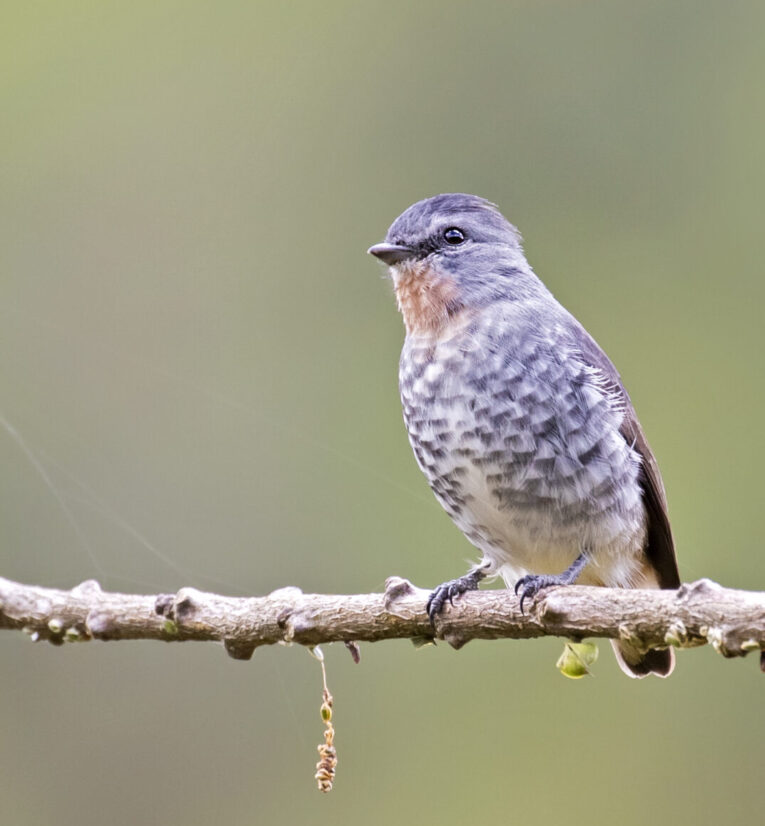
Updates
- Cancellation of the GRAVAME: a conversation has begun with the judge to cancel the GRAVAME of Fernando Andrade’s 25.99 ha property.
- Deeds of Sale and Purchase: with the cancellation of the GRAVAME of the 25.99 ha property, it will be possible to carry out a deed of sale and purchase. The second 8 ha property, also owned by Fernando Andrade, will also be regularized through the deed of purchase and sale.
- Once the deeds for both properties are finalized, the ownership is transferred to Instituto Uiraçu (IU). In this way, the purchase of 33.99 ha from Fernando Andrade is accomplished.
- The 33.99 ha will be integrated into the 180 ha complex of Nova Pastora, forming a property of 213.99 ha. Nova Pastora is part of the Serra Bonita Reserve Complex.
- IU will request the creation of an RPPN (Private Reserve of Natural Heritage) of 213.99 ha from the Chico Mendes Institute for Biodiversity Conservation (ICMBio).
- With an official decree of the creation of the RPPN, the management plan, which is already being prepared, will be submitted to ICMBio for approval.
